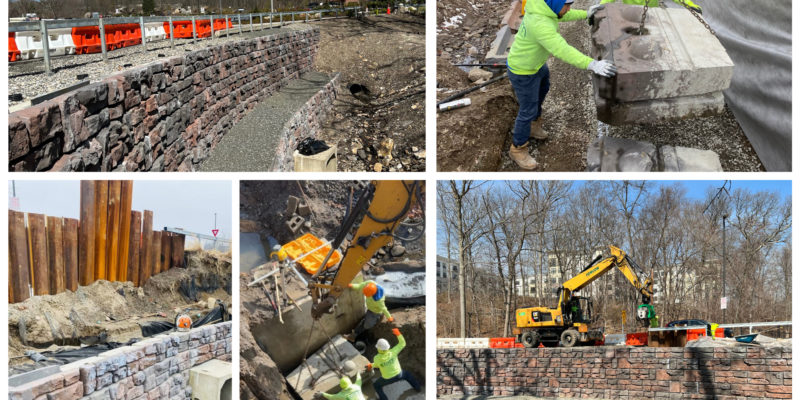Stormwater runoff is a leading cause of urban water pollution. When rain, snow, sleet fall on impervious surfaces, such as parking lots, roads, rooftops and other hard surfaces, the water washes off and carries sediment and pollutants on its way into streets and storm drains, and subsequently into rivers and lakes and watershed.
“Green infrastructure – both hardscape and natural systems, such as bioswales, rain gardens and other vegetated biofilters – is a functional, attractive, environmentally-friendly and effective way to reduce the volume and flow of runoff,” said Bobby Papotto, ELM’s enhancement manager, who is overseeing a large-scale stormwater project in Westchester County NY.
“After Hurricane Ida came through last year, there was massive flooding, roadway erosion and safety issues due to collapsed shoring and insufficient filtration systems. We began the project as a storm response effort, working with local engineering teams and the town’s permitting department to build a new retaining wall and a complex swale filtration system using a mix of sand, gravel, and soil amendments.”
“The design of this project went far beyond repairing storm damage. It has effectively provided a mechanism to reduce the volume and velocity of runoff, reclaimed water and created an important environmental asset that serves multiple functions,” added Bobby.
Green infrastructure offers an integrated solution to stormwater management, solving problems and providing benefits at the same time. This includes reducing pollutants and localized flooding, conserving water, and increasing property and economic value through improved site aesthetics and performance.
To learn more about ELM’s green infrastructure program, or ways to address water usage by reducing demands for supplemental irrigation through smart water management, contact Bruce Moore Jr. at 203.315.5433

